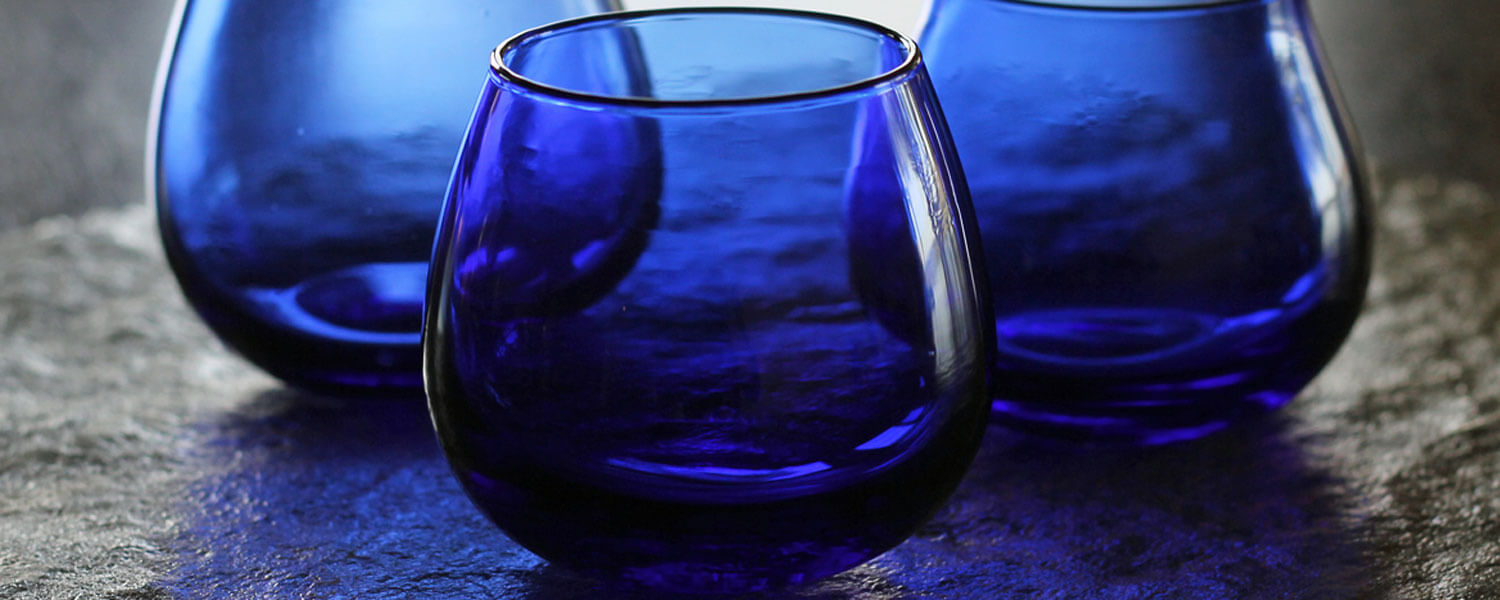
Olive oil tasting is an art of high complexity that requires well-trained tasters. The rating of each olive oil is made with a detailed evaluation card, as designated by the World Olive Oil Council (IOOC). As much as we might love to dip our bread in fresh olive oil to taste it, this is not the right way to identify a good olive oil. It is not of course necessary to buy the special blue tasting glass, to be allowed an opinion. Some basic rules are enough, to start as amateur, yet ambitious, connoisseurs our first valuations. Experience will soon ensure better judgment.
Firstly, the quality of an olive oil is revealed through smell and taste, rather than through color as many might believe. Pour a small quantity of olive oil in a hollow (which becomes narrow towards the top) glass for white wine to capture the aromas. Embrace the glass with your handful for about 20 seconds to heat up the olive oil and swirl a bit to oil the glass walls and liberate the aromas. The aromas of a good quality olive oil should refer to fresh olive aromas, herbs and leaves, all perfumes of nature, that are enclosed in the olive juice. But if the olive oil is of poor quality, the smell will be heavy and not enjoyable.

Put a teaspoon of olive oil in your mouth but do not swallow, and hold it initially to the front and then to the back part of your mouth. Allow it to reach all points of your tongue to your palate. Take a breath from the mouth, feel the taste of the olive oil and then swallow. The good quality olive oil leaves a slightly bitter taste in the mouth and a slight burning sensation in the throat, as if it is spicy. The sense of bitterness and burning are due to “elaiokanthali”, a powerful anti-inflammatory substance of the olive oil. The positive characteristics of an olive oil (organoleptic assessment criteria) are “fruity”, “bitter” and “spicy.”
After each trial wait 5-10 minutes before proceeding with the next sample. Before tasting the same or another sample, it is advisable to rinse your mouth with water and eat some bread or an apple slice. A tip for beginners would be to compare a very good olive oil and one of questionable quality, in order to highlight and therefore perceive more easily the existing differences.

How should we properly store our olive oil?
-
away from exposure to sunlight, in a clean, cool and dry place.
-
in airtight containers.
-
avoid storing it in iron barrels. Instead prefer glass containers, which you should store in a dark place.
-
while transfusing it, remove any residues.

 Olive Oil
Olive Oil Cosmetics
Cosmetics Soaps
Soaps
